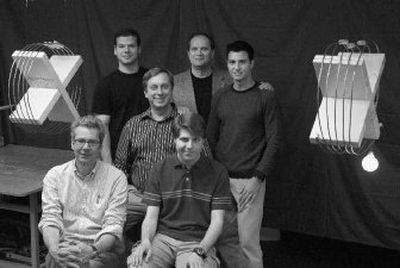Energy transmitted wirelessly

BOSTON — Massachusetts Institute of Technology researchers made a 60-watt light bulb glow by sending it energy wirelessly — from a device 7 feet away — potentially heralding a future in which cell phones and other gadgets get juice without having to be plugged in.
The breakthrough, disclosed Thursday in Science Express, the online publication of the journal Science, is being called “WiTricity” by the scientists.
The concept of sending power wirelessly isn’t new, but its wide-scale use has been dismissed as inefficient because electromagnetic energy generated by the charging device would radiate in all directions.
One advance was announced last fall, when MIT physics professor Marin Soljacic said he had figured out how to use specially tuned waves. The key is to get the recharging device and the gadget that needs power to resonate at the same frequency — allowing them to more efficiently exchange power.
It’s similar to how an opera star can break a wine glass that happens to resonate at the same frequency as her voice.
The next step was to demonstrate the principle in experiments, which is what was described in the new paper in Science. The MIT team was able to light up a 60-watt bulb that had “no physical connection” with the power-generating appliance.
“It was quite exciting,” Soljacic said. The process is “very reproducible,” he added. “We can just go to the lab and do it whenever we want.”
The development raises the prospect that we might eliminate some of the clutter of cables in our ever-more electronic world. And if devices can get their power through the air, they might not need batteries and their attendant toxic chemicals.
However, the technology has a ways to go before it becomes practical.
The MIT system is about 40 to 45 percent efficient — meaning that most of the energy from the charging device doesn’t make it to the light bulb.